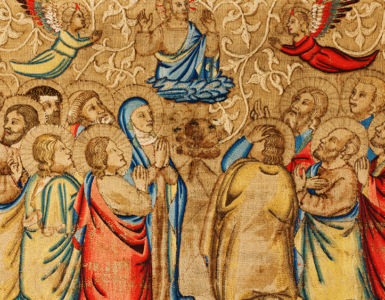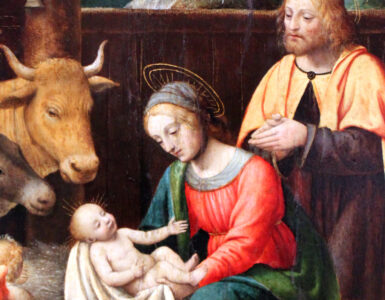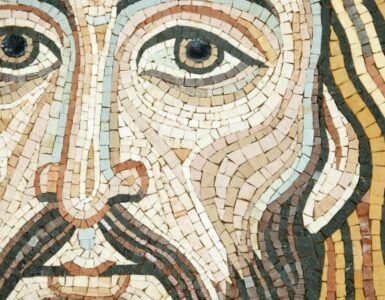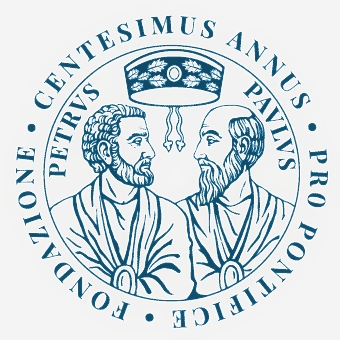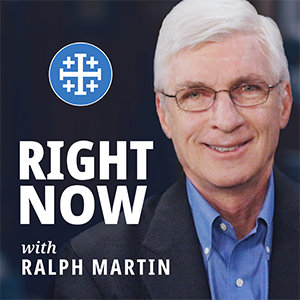Even if it is incorrect because the earth is spherical, instinctively we look up in the sky whenever we think of heaven, and we look down into the bowels of the earth whenever we think of hell.
As always, the starting point should be the fundamental fact that we are living in Christ and with Christ as one, inseparable entity: Jesus the Head and we the members of the Body of Christ, i.e., the Church. So, the Ascension into heaven doesn’t mark a separation, a going away of our Head from us the Body (that would be the end of our existence) but the marking of new ways for us to live in Christ and with Christ.
We will begin to reap spiritual benefits as soon as we realize that the Ascension must be seen as an act of love of Jesus for his Body, as he “weans” his first disciples away from his physical presence. The Ascension completes the process of helping his first disciples relate to him and live in him as fruitfully as possible yet without any further reliance on his physical presence in their midst.
How did the first disciples and the Church live in Christ and with Christ ever since his Ascension into heaven? As we go through the New Testament, we can glean these new ways of Jesus, the risen and fully glorified Lord, seated at the right hand of the Father, yet living truly with us and in each one of us. We are all familiar with these ways. Yet let us review them one more time. It is precisely by living out the different “presences” that I am about to list here that we will profit spiritually from today’s solemnity.
Jesus is God’s Word of Life. This is the most challenging way for the great majority of us when it should be, rather, a more comforting one. Every time God’s Word is just “idle” in the pages of a closed Bible, the challenge is not there. But as soon as we open the Holy Book or we hear God’s Word proclaimed in church, that Word reveals itself as Christ, Jesus proclaimed by Peter as the only One with words of eternal life. (cf. John 6:68) Therefore, every time we open our hearts to him, he invites us to a familiar, informal “chat” with him, so that we may receive from him all the light, the comfort, the guidance, the strength, and … the correction that he deems we so badly need as a community and as individuals. Since God’s Word is a living Person (the second Person of the Holy Trinity) it is amazing to realize that even though we hear the same text here is church, each one of us receives a personal message, tailored to their present needs and situation in life. So, let us not hurry to end this “chat” with Jesus and, even less, to ignore it altogether.
Christ is present in the community gathered in his name. Here we ought to keep in mind the awesome power of our official prayer done as Christ’s Body: Jesus assures us that there is no way for the Father to ignore any prayer that we address to him as his Bride, as his Body. (cf. John 14:13) So, at the end of any prayer uttered officially in our church, let our “Amen” indicate our awareness of this power of intercession that we have in Christ. The Lord is present in the presiding minister: the bishop or, most commonly, the priest presiding the Eucharist. He is indeed “alter Christus,” he is visibly and therefore physically, for us all, Christ in our midst.
The Ascension reminds us that Jesus has so decreed:
Whoever listens to you listens to me. Whoever rejects you rejects me. And whoever rejects me rejects the one who sent me. (Luke 10:16)
The Lord is present in the neediest, most neglected, most fragile of our brothers and sisters. And this is another quite challenging way of Jesus being present in heart-wrenching ways among us. But let this thought suffice: we will be judged not on how many prayers we would have said, how many devotions we would have done, how pious and edifying and honored we would have been, but on how we attended to Christ’s needs as he came to us disguised in very humble forms.
Christ is also present as the Giver of every Sacrament. I left the most obvious presence, the Eucharistic species, for last. Here Catholics are divided basically in several categories:
1) Those who, for all practical purposes, do not believe in the real presence of Christ in the Bread and Wine of the Eucharist. For them let this clear message of Paul suffice:
For anyone who eats and drinks without discerning the body, eats and drinks judgment on himself. (1 Corinthians 11:29)
Here, alas, there is a choice that brings judgment and condemnation on the individual who fails to discern the presence of Christ, the Bread of Life.
2) There are then those who receive the Body of Christ nonchalantly as if receiving something ordinary instead of the Lord of life. Thus, they fail to get any Life from the very source of Life.
3) Finally, there are those who receive the Lord in as worthy a manner as they can, but fail to discern him as the unifying force that makes the Community one with him, the Head.
For many Holy Communion is a one-on-One affair; and that is simply incomplete even if it feels good to them. This attitude is the main cause of their spiritual stagnation and must be corrected as soon as possible so that their Holy Communion would become truly fellowship with the whole Body of Christ.
If we live in Christ and with Christ availing ourselves of all these wonderful “presences” which I listed, we can truly hurry toward the realization of the flip side of the Ascension, as the opening prayer of today’s liturgy indicates.
We can live each day thinking that we are already enjoying a glorified humanity in the Lord Jesus. The Lord’s Ascension then becomes truly our glory and our hope.




